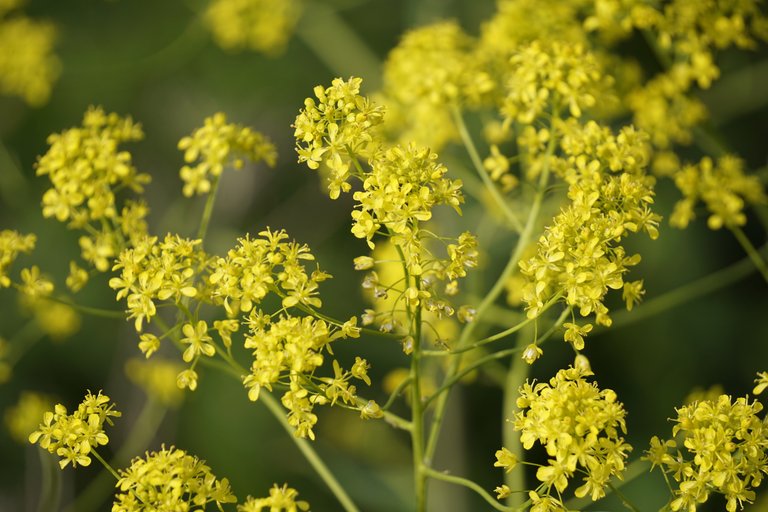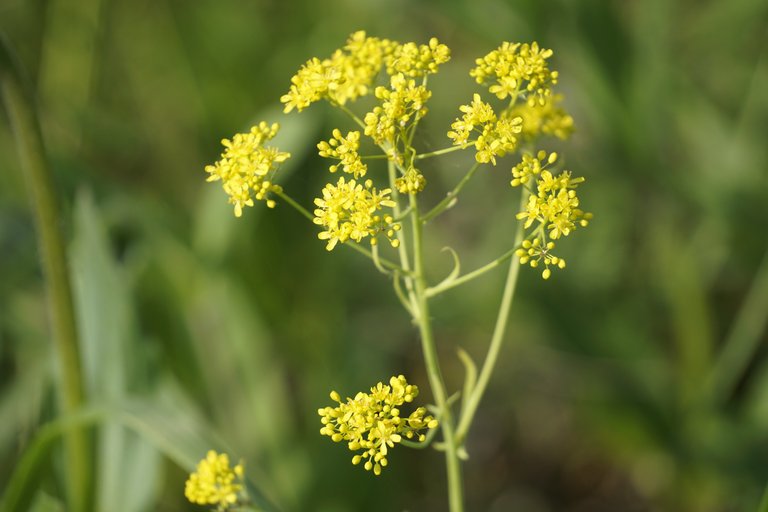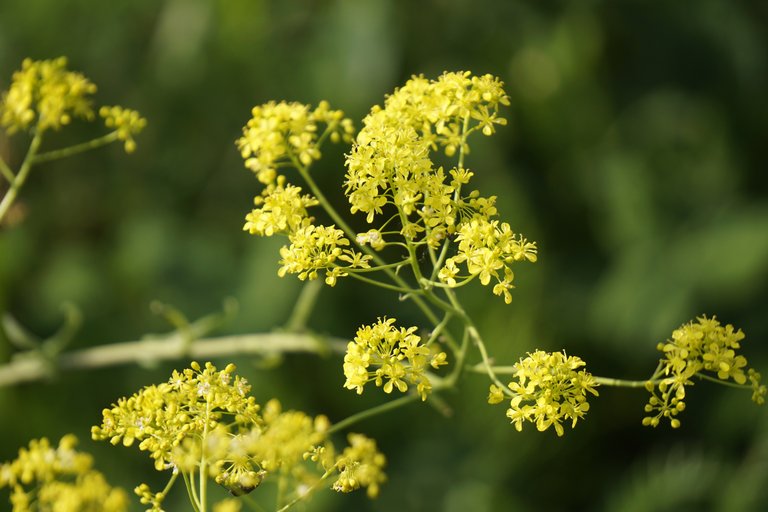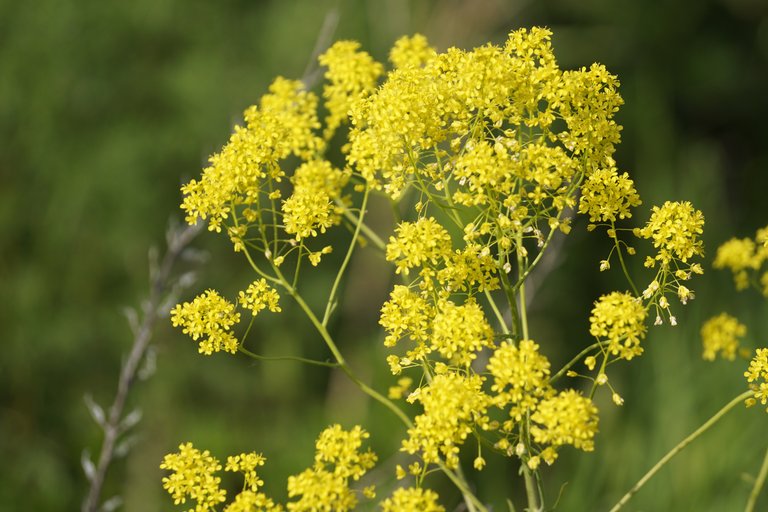Hey dear Hive community, as always I hope you are all well and have a pleasant day! In this post I would like to present you a new plant and hope you appreciate my post and can learn something new.
This plant which originally comes from Asia, bears the common name woad and scientifically Isatis tinctoria. From May, the flowering period of the biennial plant begins and it can usually be found on roadsides or meadows. Bees and other insects especially love Isatis tinctoria, which makes it also highly recommended from an ecological point of view! I found the plant in a field that was generally full of various insect-friendly plants and I took the opportunity to take more pictures.
A special characteristic is definitely that it can be used to produce natural dyes. Unfortunately, it has been pretty much forgotten as a dye these days, but in earlier times it was often used to color things blue and the dye was obtained from the leaves. This property has been more and more displaced over time by a natural indigo dye and nowadays only synthetically produced dyes are usually used. Between the mid of the 18th and the 19th century, more and more dyes were generally produced synthetically and the natural ones were replaced industrially.
I also find it interesting that nowadays the medicinal properties of the plant are also appreciated and relatively well researched, which can be used in many ways against various diseases. It has even been found that it has anti-inflammatory and anti-cancer properties or can also have a positive effect against viruses and bacteria and woad can also be beneficial against skin inflammation, detoxification or in general to improve the immune system.
It can definitely be said that it is a real treasure in the field of medicinal plants and it has even proven to be effective against pandemics, as an example it was used against the SARS pandemic in 2003. Like other medicinal plants, Isatis tinctoria is slightly poisonous and should only be used in finished medicinal products and in general you should always ask your doctor about the correct application, dosage and possible side effects!
Woad is also very anchored mythologically and already at the time of Charlemagne it has achieved a high priority and played a major role from an economic point of view. In the Middle Ages it was of great importance as a dye and ancient Germanic tribes also used it for these purposes. The use as a medicinal plant also dates back to the Middle Ages and was often mentioned in writing, even if it is much more known about it from a pharmaceutical point of view today.
Many thanks for stopping by and watching! I used my camera Sony Alpha 6000 and Sony SEL-55210 Telephoto Zoom Lens (55-210mm) to take these pictures.







This plant small leaves looks so beautiful and amazing. Such things are mostly used in making medicine etc. and they are pure which makes the medicines have a lot of an effect.
I can agree with that 100%. Some plants are real miracles of nature!
The same plant I saw often whenever I go to my aunt's home. Along the road side, it looks amazing, wonderful. Little insects comes towards it and also irritate us as wander infront of my eyes.
I’m glad to hear that this wonderful plant also beautifies your area.
I'm sure that there's still a part of the world who use Isatis tinctoria as dye. ... But I could be wrong.
Thank you for sharing as always I learned something especially the fact this Isatis tinctoria should be recommended for ecological purposes as pollination happens around them often.
The manufacturing process is a little more complicated, but when you have it out, you have a great alternative to commercial dyes. I am glad to hear that you were able to learn something new and thank you for taking the time to read my post :)
I love the way your camera focuses on the Yellow flowers and blurs the background greenery, it makes pics look way more beautiful.
Thanks for the feedback
Beautiful shots, I really like the fourth one down! Another beautiful but potentially deadly, I bet if you extracted all the different compounds you could find some nice new pharmaceuticals! What did they do with it in the times of Charlemagne?
Thank you so much! Charlemagne grown it on a large scale and it was also used as a dye in his time.
Thanks
#hive #posh
Thanks
Excellent plant with its medical support
Thanks for your feedback